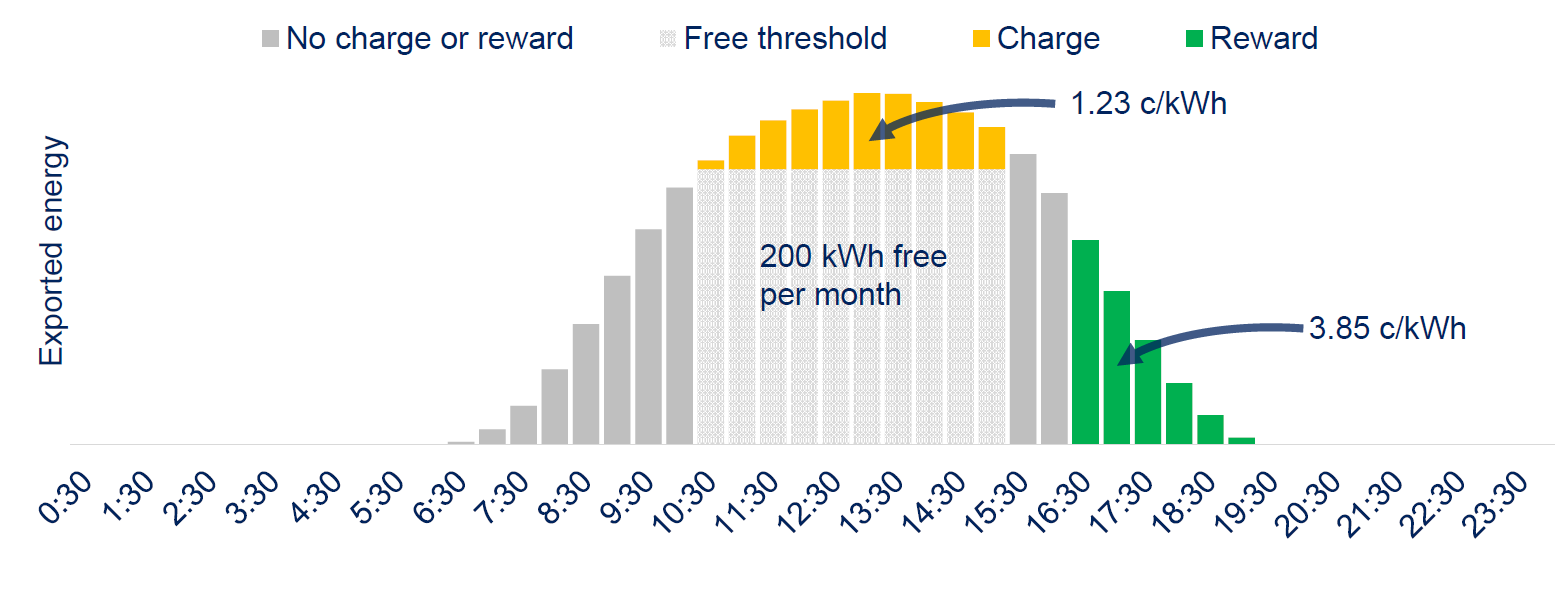Why introduce two-way pricing?
Like all our tariffs, our two way pricing is intended to act as price signals for retailers to encourage the most efficient use of our network. Our goal is to develop tariffs that fairly reflect the way each customer uses the network, while lowering the overall cost of the system.
Two-way pricing was introduced to:
- Encourage customers to use the solar they generate in the middle of the day (rather than export) or send their exports into the grid later in the day. Exporting later in the day, when demand for electricity is highest, helps to reduce pressure on the network and keep future electricity costs down.
- Our electricity network is also changing. The number of solar systems in our network is growing and more customers are using Ausgrid’s network to receive and export solar energy. This creates new challenges and additional costs for the grid. Two-way pricing is part of preparing the network for this future and a way to fairly attribute costs across customers driving this change.
- It manages electricity flowing both ways and supports solar growth, which helps keep the network safe and reliable for all our customers.
How it works
There are three parts:
- Free threshold: No charge for the first 200kWh1 exported each month between 10am and 3pm
- Charge: A charge for electricity exported above the free threshold between 10am and 3pm
- Reward: A credit for exporting between 4pm and 9pm





